“By encouraging natural predators of any specific pest into the area, the pest in question will be controlled. Ladybirds, lacewings, frogs, hedgehogs and birds are all great at limiting numbers of garden pests such as aphids and slugs.” – RSPB
Contents
What is natural pest & weed control?
Natural pest and weed control means using non-synthetic methods to prevent or kill weeds and pests in the garden. For example, instead of using glyphosate weedkiller (‘Roundup’) to tame an overgrown allotment, you could cover the soil with cardboard and straw for a few months. Or instead of spraying fruit trees to kill aphids, you could put up bird boxes in or near them and let the birds do the work for you.
These are just a couple of examples (more below) – but really, this has only become a topic since the development of synthetic pesticides and weedkillers. There were no methods of pest and weed control other than natural methods from the beginnings of agriculture around 10,000 years ago until about a hundred years ago.
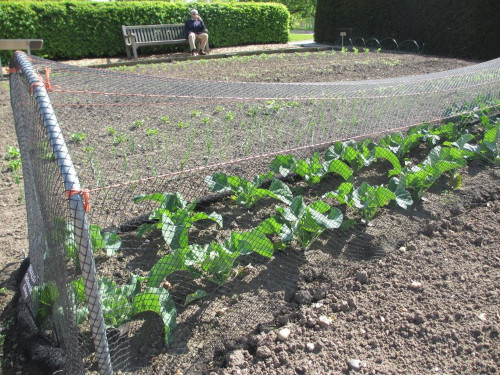
It was only after the introduction of synthetic chemicals into food production that natural pest and weed control became a separate topic in its own right, and until recently, quite a marginal one. We’d like it to take centre stage again because of the huge ecological problems caused by the release of toxic synthetic chemicals into nature on a massive scale.
Of course, some non-synthetic substances can be toxic too, and plant extracts, such as pyrethrum, from chrysanthemums (which is allowed in organic farming) or nicotine from tobacco (which isn’t) have been used. It’s only since the large-scale manufacture and use of synthetic pesticides after the Second World War that widespread ecological damage has occurred. The organophosphates used to produce the first commercial pesticides were originally developed in Germany for use in chemical warfare.
What are the benefits of natural pest & weed control?
- Synthetic pesticides and weedkillers are poisonous, and therefore risky things to have around our homes, gardens and farms.
- Chemical residues in our food can poison us both quickly and obviously, but also in more subtle, long-term ways.
- Synthetic pesticides also kill not just the bugs that they are aiming at, but also whole categories of other species that just happen to get in the way, including soil biota; many of these ‘collateral damage’ species are essential for the balance of nature in your garden and further afield.
- Loss of predator species, killed by pesticides, actually makes the pest problem worse as a vicious spiral develops.
- Poisons also find their way to the wrong places via run-off, spillages or disposal, and destroy plants, animals and their habitats
- Garden chemicals are expensive, corporate and made in factories, whereas many non-chemical means of control are free, cheap or re-use waste materials

What can I do?
Here’s some more reading – from the Henry Doubleday Association (now Garden Organic) and from South Carolina State in the US.
Controlling pests
First, make sure you are practising good soil management, because vigourous, healthy plants growing in healthy, well-managed soil are much less susceptible to pests.
Encouraging pest predators
Birds eat aphids, caterpillars and other insect pests, so one of the best things that you can do to reduce pests in your garden is to invite more birds into it. You can do that by giving birds places to live in your garden, and bribing them to visit and stay by providing food. You can buy or make bird boxes. Designs vary depending on which type of bird you want, e.g. robin boxes have a letter-box shaped slot at the front, and blue-tit boxes have a small hole for an entrance. You can easily find instructions and plans for bird boxes online. Now, think about your bird menu – you could plant trees and bushes with berries that attract birds, such as hawthorn and rose hips, or flowers that produce seeds that birds enjoy, such as sunflowers, zinnias, cornflowers and marigolds. Be careful though not to attract birds towards the berries that you want to harvest, such as your soft fruit area – best to attract the birds towards the vegetable beds and fruit trees.
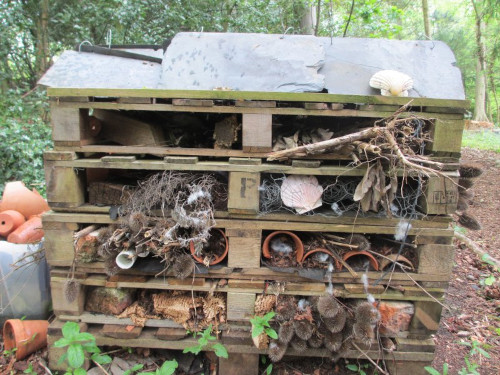
Frogs and toads eat lots of slugs, so it’s a great idea to have a wildlife pond in or near your food-growing area. The pond doesn’t need to be all that big – even an old bucket or sink buried in the ground would do – just be sure to make ramps for wildlife to get in and out. Hedgehogs are also useful predators of slugs, snails and caterpillars, so make your garden hedgehog-friendly by having an area of long grass or other cover, removing barriers and accidental traps, and if you feed them, check what they should eat (i.e. not bread and milk); more details here.
You can also reduce pests in your garden by encouraging beneficial insects. Almost everyone knows that ladybirds eat huge quantities of aphids (especially at the larval stage – see photo). Lacewings also eat aphids and are to be encouraged. There are two main things you can do to encourage beneficial insects: firstly, never use pesticides, as pesticides wipe out your beneficial insect population (i.e. the opposite of encouraging them). Since pests such as aphids reproduce faster than beneficial insects, all you do is make the problem worse and end up in a vicious spiral of ever-increasing pesticide use. Nasty! Secondly, you can make homes for your beneficial insects, by making a bug hotel. These can be made really easily and cheaply, for example just by cutting the end off a plastic bottle and filling it with dry hollow stems and sticks, or rolled up corrugated cardboard, then fixing it to a sheltered wall or fence. More information here.
Another great tip to get lacewings breeding – leave a stack of the egg-holding parts of egg boxes on a shelf in your greenhouse or shed over the winter. Lacewings just love the spaces between the different layers, and in spring it will be full of new lacewings hatching out (leave it undisturbed from late summer until late spring).
In recent years it has become possible to buy insects such as ladybirds by mail order. This might be worth doing if you have plenty of money, a large greenhouse, a major aphid problem, and no ladybirds – but it’s an expensive solution and the ladybirds might fly off elsewhere! You’ll also often see adverts (if you read gardening magazines) for mail-order nematodes – tiny parasitic worms, less than 1mm long, which get into slugs and kill and eat them from the inside (yuk). These are watered into the soil starting in early spring, and will control slugs for about 6 weeks, after which you might need to buy another pack – see nemaslug.co.uk. While some gardeners do find nematodes useful, longer term, rather than relying on a predator which you have to keep on buying all the time, you’re probably better off taking other natural measures to control slugs – such as encouraging birds, amphibians and hedgehogs, and of course removing slug and snail habitats such as piles of stones and long grass around the edges of beds.
Trapping
The best-known trap for slugs and snails is a ‘beer trap’. Just fill a shallow dish with leftover beer, place it on the ground, and if the weather is wet, improvise a lid or cover which keeps out rain but allows in slugs and snails. They are attracted to the beer, climb into the trap, and drink themselves to death. You can also buy special plastic containers to use as beer traps, though making your own is simple and cheaper. Any container which can hold 2cm of beer, keeps out rain, but allows in slugs will do.
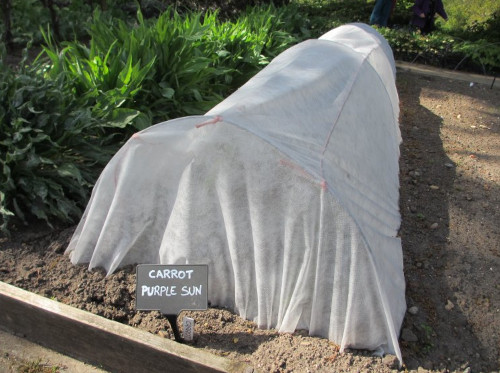
You can also buy pheromone traps which you can hang in fruit trees to control pests, but this is usually only done by commercial fruit growers, who might for example use a pheremone trap to catch male codling moths in apple trees to reduce the number of maggoty apples in their crop. There are also sticky ‘fly paper’ traps which you can hang in plants in greenhouses to catch aphids. If you want to try these, be sure to only buy traps which don’t contain an insecticide.
Traps don’t have to be lethal: you can provide shelters that slugs and snails will love to hide under – half an orange or grapefruit skin that’s been squeezed for juice, placed skin side upwards to make a sort of igloo, is an old favourite, but a plank of wood laid on the soil will also do. Every morning, lift the traps and (with gardening gloves on) pick up the slugs and dispose of them either humanely or not so humanely (see below).
Aphids love nettles, and so do ladybirds. One market garden grows nettles in pots, and places them near crops that they want to protect – newly arrived aphids then settle on the nettles and get eaten by the ladybirds.
Hunting
Slugs and snails are most active at night, so many organic gardeners who want to control their slugs and snails go out on ‘slug patrol’ with a torch and a bucket after dark to pick up the pests. Some hunters drown their prey in a bucket of water, but kinder souls keep a lid on the bucket them empty it a long way from their garden the next day.
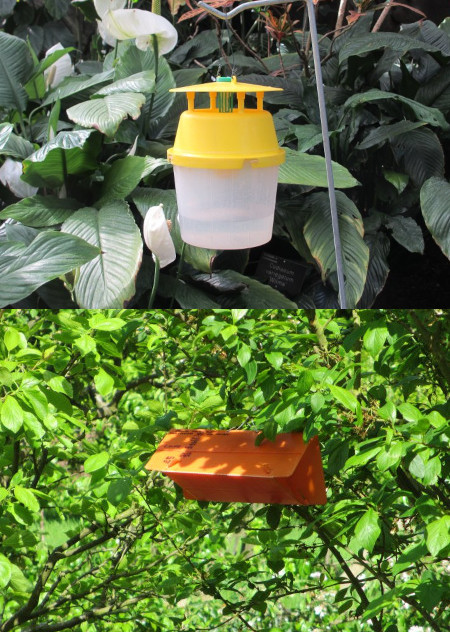
In daytime, you can inspect your crops for pests such as caterpillars and aphids (blackfly, greenfly, whitefly). Caterpillars can be picked off and taken away or killed; aphids really just have to be squished between your fingers (or sprayed with a dilute household soap solution, which kills them and is safe and environmentally friendly). Garlic and chilli pepper solutions may also be useful as a natural insecticide.
Barriers
As well as a way of killing slugs, water also makes a very effective barrier that they won’t cross. Now you probably can’t construct your veg beds with a moat around them, but you can stand a pot or container on an upturned plant saucer, inside a larger plant saucer or shallow container that you fill with water. Voila – you’ve made a slug moat around your special plant. You can also stand the legs of plant tables or greenhouse staging in containers of water to prevent slugs from climbing up them. Making plant tables with legs of rough-sawn wood can also be pretty effective at stopping slimy visitors from climbing up them.
There are other things that slugs and snails are reluctant or unable to crawl over. They’re not fond of crawling over galvanised metal and even less keen to crawl over copper. So you could make planters out of old galvanised water tanks or copper water cylinders… or just buy some copper tape to stick around your pots and containers, though this is expensive so probably not an option for lots of large containers. A cheaper option is petroleum jelly (aka Vaseline), which you can smear on surfaces to deter slugs. You can smear it on the outside of a pot, or cut rings from a plastic bottle, smear the outside with petroleum jelly, and put them round your small plants (be sure to push them 2-4cm into the soil, leaving 4-6cm sticking up).
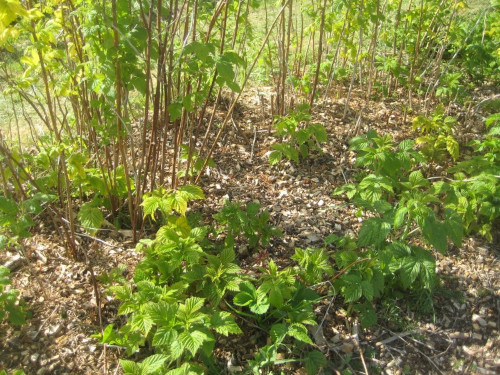
Fine mesh, rather like old-fashioned net curtain, is widely used to protect crops from insect pests (Enviromesh is a leading brand, but there may be others). This is extremely effective at keeping Cabbage White butterflies away from brassicas, and carrot fly away from carrots. It needs holding down with tent pegs, bent wire staples or weights to prevent it from blowing away, but it can stay in place from when the crop is planted until harvest. The only real downside of using mesh is that good mesh is expensive – although it does last for years. Crop netting is cheaper and is good for keeping out cabbage white butterflies, but not insects of course (they’re small enough to fly through it).
A cheaper but less durable alternative is horticultural fleece, which is a thin, white, spun material that is mainly used for covering early plantings to speed growth and/or keep off frost. It can be really useful when planting out young tomato, squash or courgette plants. Make a small frame over a plant or row of plants by upturning an old wire bike basket, supermarket basket or similar, or with hoops of thick garden wire or bendy sticks. Cover with horticultural fleece, digging the edges 8-10cm into the soil all round. This cover not only speeds growth and protects from late frost, but is also very effective at protecting the young plants from slugs and snails (you could sprinkle a few organic slug pellets around the plants before covering – but use even organic slug pellets very sparingly).
Confusion and disguise
Some pests find the plants that they like to eat by sight – colour or shape – so it can be better to avoid the usual practice of planting blocks or rows of the same type of plant. Instead, plant mixtures of different types of plant in each area – growing ‘polycultures’ as some gardeners put it, but note that sweetcorn must be planted in blocks, to enable it to pollinate. Similarly, some pests use their sense of smell to find your crops, so some organic gardeners like to plant onions next to carrots, or French marigolds next to tomatoes, to try to disguise the smell of the crops.
And finally, you can make a scarecrow or hang old CDs near to your baby brassicas to scare off pigeons.
Controlling weeds
There are plenty of better, safer alternatives to using synthetic weedkillers.
Mulching
Mulching means putting a layer of material over the soil to exclude light, without which weeds won’t germinate or grow. Mulching also benefits plants by keeping the soil most, reducing the need to water crops, and mulches (apart from black plastic) also eventually break down to produce soil-enriching compost.
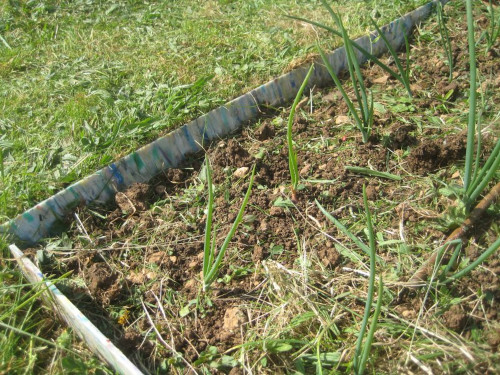
Flattened cardboard boxes make a good mulching material, or you could use opened-out newspapers (at least 10 pages thick). Newspaper or cardboard on their own need holding down to stop them blowing away, which can be done with bits of wood, bricks etc. but this easily becomes tedious and messy. Better, if possible, to cover them with straw, woodchip, or other organic matter (pulled-up weeds, kitchen waste, spent hops, garden compost, grass clippings, or garden shreddings, for example). A deep layer of any of the above can also be used on its own as a mulch, but cardboard or newspaper underneath is preferable.
A good light-excluding mulch can not only suppress the growth of new weeds, it can clear overgrown areas too. As well as the options listed above, old carpet has often been used to cover badly overgrown allotments or veg beds – in six months to a year the weeds underneath will be dead and most will have rotted down. Carpet, however, is out of favour among organic gardeners, because of worries about soil contamination from chemicals in the dyes, glues, backings etc. So carpet is probably best avoided unless it’s entirely made of natural fibres and you’re reasonably sure that the dyes are non-toxic.
Non-natural mulching materials include thick black polythene and woven polypropylene landscaping / weed suppressing fabric (often referred to as ‘Mypex’, but many other brands exist). The best way of holding down landscaping fabric is with big wire staples, which you can make yourself out of fencing wire or buy ready-made. You can add a layer of organic material (woodchip etc.) on top of black polythene or landscaping fabric – this has the advantage of keeping sunlight off the polythene/polypropylene, which otherwise will break up in a few years and then will have to be sent to landfill. It can take a year to kill couch grass using a good light-excluding mulch, but it does die in the end and the spaghetti-like roots rot away. Unfortunately, it’s just about impossible to kill bindweed (Convolvulus) however long you exclude the light from it, though most of the the bindweed roots do tend to come to the surface just below the mulch, which makes their removal easier.
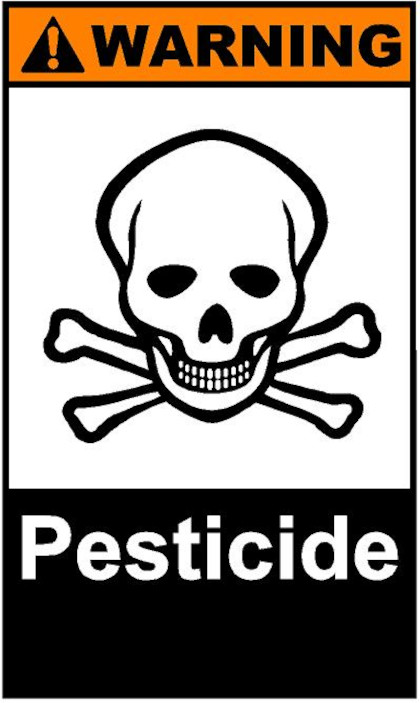
No-dig
There are several reasons not to dig vegetable beds, and one of them is that digging continually brings to the surface a new flush of weed seeds, which can lie dormant in the soil for many years. Young weeds can be dealt with by hoeing, and sometimes using a sharp digging spade like a wide hoe to cut the weed tops from their roots can be a very quick and effective way to tidy up a bed between crops.
Organic growers often make use of flame-weeders to kill youngish weeds, either between rows or just before the crop seedlings are due to germinate. Mulches of organic matter (e.g. weeds) can also be used between rows of crops to prevent new weed seedlings germinating. It’s often better to use the weeds as a mulch where they are (between rows and around plants and bushes) rather than carting them off to the compost heap, only to have to cart the compost back to the beds a few months later.
Between crops or seasons, beds can be sown with a green manure such as rye grass, Phacelia and mustard to boost fertility and keep weeds in check. Alternatively, beds can be covered over winter with landscaping fabric or black polythene – when the covers are taken off in the spring the soil will be warm, soft and weed-free, ready to start the year’s planting.
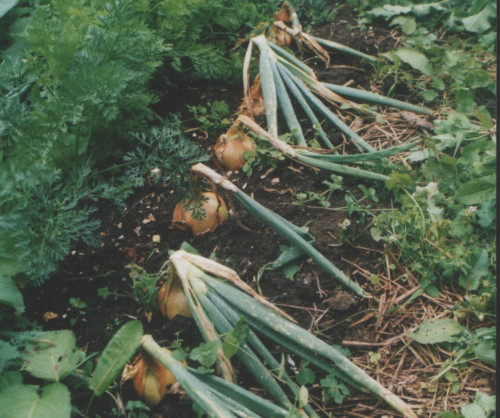
Prevention is better than cure
If you can, avoid ever letting weeds set seed. Hoe or mow down weeds before they flower. This ‘stitch in time’ policy will hugely reduce the amount of weeding required, though some weed seeds will always blow in from elsewhere, especially on an allotment site where some plotholders are less careful.
Weed roots also spread into vegetable beds and borders from the surrounding paths or grassy areas. Unless your lawn or grass paths are weed-free, it’s best to edge your beds and borders with a barrier that goes down about 15cm into the soil. Metal, wooden or plastic edging can be used, and will massively reduce the amount of time you waste maintaining the edges of your beds, or dealing with invasions of creeping buttercup, bindweed or couch grass. Don’t leave much of the edging sticking out above ground, though, because it can serve as a shady hiding place for snails.
A barrier of really vigorous plants can be used as edging around beds and borders if you have the space – for example growing comfrey along the edge of your veg plot, to keep out neighbouring couch grass (and produce abundant comfrey leaves as useful mulch, compost material and source of liquid comfrey feed).
The RHS and Garden Organic can provide more detailed advice about controlling weeds without ever resorting to weedkiller, and here’s an article about naturally repelling the arch-enemy – slugs.
Specialist(s)
Thanks to Simon White of Stepney City Farm for information.
The specialist(s) below will respond to queries on this topic. Please comment in the box at the bottom of the page.

Ludwig Appeltans is a forest garden/permaculture designer and teacher, and nature connection mentor. He founded Earth Ways in 2007 and is now developing a Permaculture community on the Isle of Skye. He provides solutions to the rapidly increasing demand for sustainable ways of living that work in collaboration with nature rather than continually fighting against it.

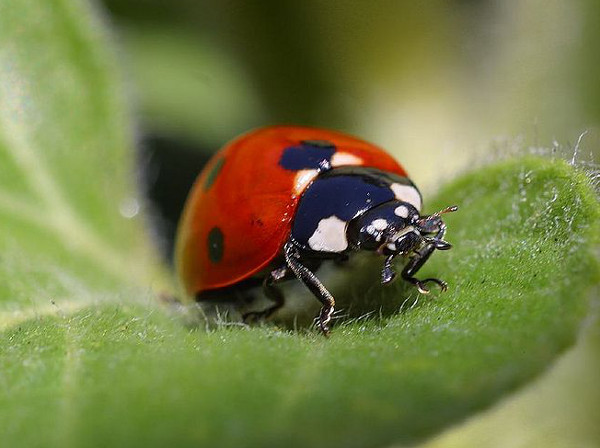
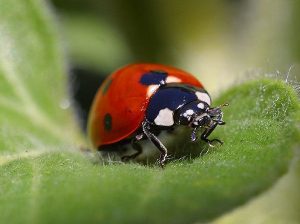
7 Comments
Would be great to teach this stuff in schools!!
I visited a new client’s garden this week because they have requested a border design. The client told me that the newly prepared beds contain a mix of clay soil mixed in with plenty of organic matter. On top of that soil there is a layer of black fleece, then a layer of quite course bark chippings. I am concerned that the worms will not be able to pulll down any organic matter over winter because the fleece is blocking them. Plus ,is it right to trap light, air and seeds under a layer of fleece anyway?
Many thanks
Anna
Hi Anna,
Indeed, you are right, for the next few years, depending on the quality of the fleece, it will inhibit the worms from pulling down organic matter.
That however doesn’t need to be a problem. There will be plenty of worms present underneath the fleece, digesting the organic matter below and as the fleece rots down, they will take care of that too. In the mean time, the fleece and bark chipping mulch will protect the soil and stop weeds from taking over.
The benefits of mulching are plenty. The fleece will prevent the chippings from getting mixed into the soil, where they will rob the nitrogen.
Mulching like this can be a real benefit to the soil, depending on what the purpose of the garden is. I don’t know enough to be able to comment on this.
It sounds like it might be best to work with what is there, rather than change that. You can plant things into the mulch and use the mulch to prevent weeds from taking over. When planting, try to keep the bark chips on top of the soil, don’t mix them in.
Hi Any recommendations for ants?
Today i planted flax seeds and in the afternoon an army of ants was taking my seeds away 🙂
I am looking for a way to avoid them without killing them. I tried some lemon juice and coffe grounds around the are but it did not help.
Cheers,
Hi Julian,
Thanks for your question. It is not an easy one to answer. It depends on the behaviour of the ants. You say they harvest seeds. Do you know what species of ants they are? Ants are important in a larger ecosystem but more difficult to live with in a smaller one. I shared my garden with some red wood ants once upon a time. A protected species, even outside my garden. They were killing many of my predators and milking the greenfly. But I did not notice a bigger problem in my overall garden ecosystem. The time of sharing the garden with them was not long enough to observe enough to draw conclusions.
The short term suggestion I’d offer you is to pre-germinate the seeds before scattering and covering with some compost and sow some extra. Or provide an alternative (sacrificial crop) for the ants.
I’d love to investigate more once I know the species of ant.
Thanks for your question
Ludwig
The weeds in my mother’s garden that appeared while she was away have been causing her anguish. Synthetic insecticides and weedkillers are dangerous to have around since, as you indicated, they are poisonous. I’ll be sure to tell my mum about this because hiring specialists would be advantageous because they know what to use for the weeds and how to manage them safely. I’ll look into any weed control services in the area that might be able to assist her.
https://www.hudsonbroslawncare.com/weed-control
The weeds in my mother’s garden that appeared while she was away have been causing her anguish. Synthetic insecticides and weedkillers are dangerous to have around since, as you indicated, they are poisonous. I’ll be sure to tell my mum about this because hiring specialists would be advantageous because they know what to use for the weeds and how to manage them safely. I’ll look into any weed control services in the area that might be able to assist her.